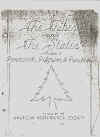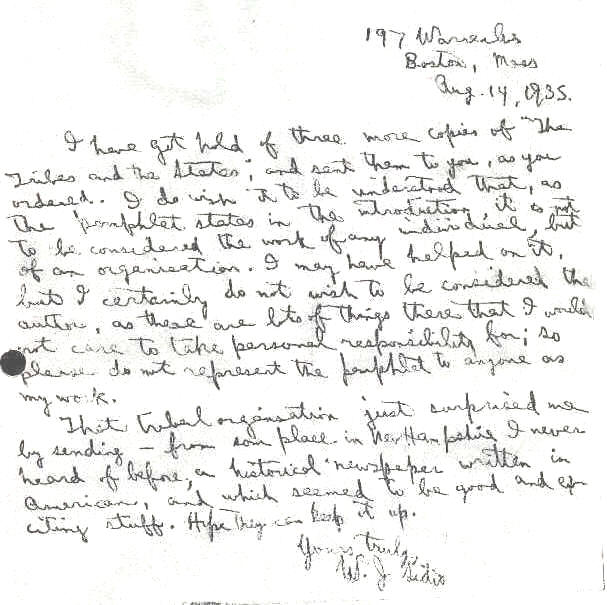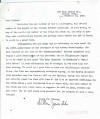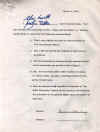|
Home
|
THE
TRIBES
AND THE
STATES
W. J. Sidis
© 1982 (1935) by Wampanoag Nation
(background: wampum language pattern.)
|
Short Annotated Bibliography of Animate and Inanimate in Basque and Algonquin Languages
TABLE OF CONTENTS
| 39 |
Federation on the Quinnitucket |
| 40 |
The Pequot War |
| 41 |
Puritan Re-Migration |
| 42 |
Puritan Revolt in England |
| 43 |
New Haven |
| CHAPTER X |
THE NEW ENGLAND CONFEDERATION |
| 44 |
Difficulties with the Dutch |
| 45 |
New England Federation |
| 46 |
Annexation of the Piscataqua |
| 47 |
New Sects |
| 48 |
Conquest of the South |
| 49 |
The Middle Regions |
| CHAPTER XI |
UNDER RESTORED MONARCHY |
| 50 |
American Policy of the Restored Stuarts |
| 51 |
The Penacook Country at the Restoration |
| 52 |
The Duke of York's Claims |
| 53 |
New Settlement in Carolina |
| 54 |
Punishing New England |
| 55 |
New York's Border Conflicts |
| CHAPTER XII |
METACOM'S WAR |
| 56 |
Bashaba Metacom |
| 57 |
Plymouth Resents Metacom |
| 58 |
Reconquest of Paumonok |
| 59 |
Effect of the Penacook Federation |
| 60 |
War Against Plymouth |
| 61 |
Converts and Adoptees |
| 62 |
The Defeat of the Tribes |
| 63 |
Rebellion in Virginia |
| CHAPTER XIII |
QUAKER SETTLEMENT |
| 64 |
The Keystone Colony |
| 65 |
Starting the Quaker Colony |
| 66 |
Massachusetts's Charter Disputes |
| 67 |
Extension of the Keystone Territory |
| CHAPTER XIV |
THE ANDROS REGIME |
| 68 |
New York's Overlord Becomes King |
| 69 |
New York Annexes New England |
| 70 |
Witchcraft |
| 71 |
Rebellion Against Andros |
| 72 |
The Rebellion Spreads |
| CHAPTER XV |
REBEL PROVINCES |
| 73 |
Rebel Provinces |
| 74 |
Father Rasles |
| 75 |
The Hudson Valley Is Attacked |
| 76 |
The Rebel Governments |
| 77 |
Scalping Bounties |
| 78 |
Down the Mississippi |
| 79 |
End of the Rebel Governments |
| CHAPTER XVI |
INTERCOLONIAL STRUGGLES |
| 80 |
The Peace of 1697 |
| 81 |
Louisiana |
| 82 |
The English Colonies after the Partition |
| 83 |
The Acadian War |
| 84 |
Wars Against the Tribes |
| 85 |
A Thirteenth Colony |
| 86 |
Religious Reform |
| 87 |
The Georgian War |
| CHAPTER XVII |
THE GREAT OHIO WAR |
| 88 |
Canessetago and Franklin |
| 89 |
Expulsion of the Acadians |
| 90 |
The Lanapes' New Home |
| 91 |
French Expansion in the Interior |
| 92 |
Virginia's Ohio Expedition |
| 93 |
The Great Ohio War Starts |
| 94 |
Iroquois Territory Invaded |
| 95 |
Amherst's Smallpox |
| 96 |
Capture of Canada |
| 97 |
The Peace of 1763 |
| CHAPTER XVIII |
AFTERMATH OF THE GREAT OHIO WAR |
| 98 |
Royal Peace Proclamation |
| 99 |
The Ottawa Federation |
| 100 |
Spanish Exploration |
| 101 |
The New Regime in Canada |
| 102 |
Manufacturing in England and America |
| 103 |
New Titles in New England |
| 104 |
Collecting for the War |
| CHAPTER XIX |
DEFIANCE |
| 104b* |
The Stamp Act Congress |
| 105 |
Boston is Invaded |
| 106 |
The South Defies the Proclamation |
| 107 |
The Virginia Liberals |
| 108 |
The Quebec Act |
| 109 |
Other Complaints |
| 110 |
Smugglers' Resistance |
| 111 |
Correspondence Committees |
| 112 |
The Boston Port Bill |
| CHAPTER XX |
THE PERIOD OF CIVIL DISOBEDIENCE |
| 113 |
A New Military Regime Enters Massachusetts |
| 114 |
Congress of the United Colonies |
| 115 |
The Provincial Congress in Massachusetts |
| 116 |
Aid from New Hampshire |
| 117 |
The Winter of 1774 in Boston |
| 118 |
New York Attempts to Oust the Vermonters |
| 119 |
The British Raid Middlesex |
| 120 |
The Pursuit |
| CHAPTER XXI |
THE SIEGE OF BOSTON |
| 121 |
The Siege Begins |
| 122 |
The Capture of Ticonderoga |
| 123 |
The Mecklenburg Declarations |
| 124 |
Revolt in Maine |
| 125 |
The Continental Congress of 1775 |
| 126 |
The Attack on Charlestown |
| 127 |
Washington Takes Command |
| 128 |
Attack on Canada |
| 129 |
Evacuation of Boston |
| CHAPTER XXII |
DECLARATION OF INDEPENDENCE |
| 130 |
The Continental Army Moves to New York |
| 131 |
Independence in Rhode Island |
| 132 |
Independence Discussed by the Continental Congress |
| 133 |
The Declaration of Independence |
| 134 |
The Accusations in the Declaration |
| 135 |
Federal Structure of the First Republic |
| CHAPTER XXIII |
THE WAR FOR INDEPENDENCE |
| 136 |
Proclaiming Independence |
| 137 |
England Recovers New York |
| 138 |
"Burgoyning" |
| 139 |
Foreign Aid |
| 140 |
The Articles of Confederation |
| 141 |
The War in the West |
| 142 |
The "Commonwealth" |
| 143 |
The War in the South |
| CHAPTER XXIV |
THE FIRST REPUBLIC |
| 144 |
Peace Negotiations |
| 145 |
Evacuation of New York |
| 146 |
Post-Revolution Migrations |
| 147 |
The Green Mountain War |
| 148 |
The Northwest Territory |
| CHAPTER XXV |
ECONOMIC RECONSTRUCTION OF THE FIRST REPUBLIC |
| 149 |
Conflict of Economic Systems |
| 150 |
Currency under the First Republic |
| 151 |
Church Reorganization |
| 152 |
Land and Trade under the First Republic |
| 153 |
The Soldiers' Demands |
| CHAPTER XXVI |
THE SHAYS REBELLION |
| 154 |
The Rhode Island Coup |
| 155 |
The Hatfield Convention |
| 156 |
The Northampton Insurrection |
| 157 |
Spread of the Shays Rebellion |
| 158 |
Defeat of the Rebellion |
| 159 |
Refugees and Prisoners |
| CHAPTER XXVII |
THE CINCINNATI CONSPIRACY |
| 160 |
The Annapolis Convention |
| 161 |
Aftermath of the Shays Rebellion |
| 162 |
The Northwest Ordinance |
| 163 |
The Secret Meeting at Philadelphia |
| 164 |
The Plan for the Overthrow |
| 165 |
The Ratifying Conventions |
| 166 |
The Massachusetts Reservations |
| 167 |
The First Republic Surrenders |
| CHAPTER XXVIII |
WASHINGTON'S ADMINISTRATION
|
| 168 |
The Second Republic is Started |
| 169 |
Opposition to the Second Republic |
| 170 |
The Recalcitrant States |
| 171 |
Northwest and Southwest Territories |
| 172 |
The Bill of Rights |
| 173 |
Washington and the Federal District |
| 174 |
Federalist Regime Economic Activities |
| 175 |
Foreign Relations |
| 176 |
Washington Retires |
| CHAPTER XXIX |
DOWNFALL OF FEDERALISM |
| 177 |
American Neutrality |
| 178 |
Sedition Laws |
| 179 |
The Dispute with Georgia |
| 180 |
End of the Federalist Period |
| CHAPTER XXX |
UNDER THE DEMOCRATIC- REPUBLICANS |
| 181 |
Jefferson Becomes President |
| 182 |
Acquisition of Louisiana |
| 183 |
The Embargo |
| 184 |
Tecumseh |
| 185 |
The Canadian War |
| 186 |
Dictatorship in Louisiana |
| 187 |
Fixing the Borders |
| 188 |
Missouri Becomes a State |
| 189 |
Renewal of South American Revolutions |
|
[The End?]
|
Related: Social Continuity Theory Continuity News Penacook Courier
America's Search for Liberty in Song & Poem

|
197 Warren Ave.
Boston, Mass
[Sunday,] Aug. 4, 1935
I have sent you a copy of the first installment of the Tribe's pamphlet "The Tribes and the States." Not my pamphlet, but the Tribe's―compiled and edited by the Okamakammessets, and issued by the American Independence Society. The charge is 50¢, but no real hurry.
I am sorry I have no better news to report so far. Took another Civil Service exam, and was informed that I passed the state clerical exam, and I am No. 254―not so encouraging.
The Independence Society is getting together a new one―a collection of poems of American Liberty. I heard also last week that the "Tribe" is planning to get out its history in a new form―a monthly issue, each time to be dated some past date and describing the history of that time as current news.
Sorry things are going worse over in N.Y. Better luck for next time!
W. J. Sidis

(Click)
|

|
197 Warren Ave.
Boston, Mass
[Wednesday,] Aug. 14, 1935
I have got hold of three more copies of "The Tribes and the States," and sent them to you, as you ordered. I do wish it to be understood that, as the pamphlet states in the introduction, it is not to be considered to be the work of any individual, but of an organisation. I may have helped on it, but I certainly do not want to be considered the author, as there are lots of things there I would not care to take personal responsibility for; so please do not represent the pamphlet to anyone as my work.
That tribal organisation just surprised me by sending―from some place in New Hampshire I never heard of before, an historical newspaper written in American, and which seemed to be good and exciting stuff. Hope they can keep it up.
Yours truly,
W. J. Sidis
|
Sidis mentions the pamphlet in Continuity News, Feb., 1939.
"The following mimeographed pamphlets may be ordered through Continuity News: The Tribes and the States (a new version of American history), 50¢. per section. These sections are now ready, covering history to 1689."


Transfer of The Tribes and the States to the Wampanoag Nation

Click to enlarge.
From a blogger:
|
"It is hard to be fair to Sidis from this distance. His book The Tribes and The States, about the 100,000-year history of American Indians, is insanely wrong. He gets their genetics, languages, and government badly wrong. But I am not certain what knowledge was available to him in the early 20th C. Though his theories did not turn out to be true, he may have had ideas worth exploring – no worse than the theories of other experts – based on what was known. I suspect not. He also believed in Atlantis, which figures prominently in his discussion, and reads into the known historical record with great certainty things that even then would have been highly speculative. He insists that “farthest Thule,” where Phoenicians and others raided for slaves was Newfoundland. There is simply no evidence this is so."
Posted Monday, December 19, 2011 Assistant Village Idiot .
The above should earn him a promotion.
Posted here by Dan Mahony,Monday,July 29, 2013:
|
Home Sidis Bio

|





